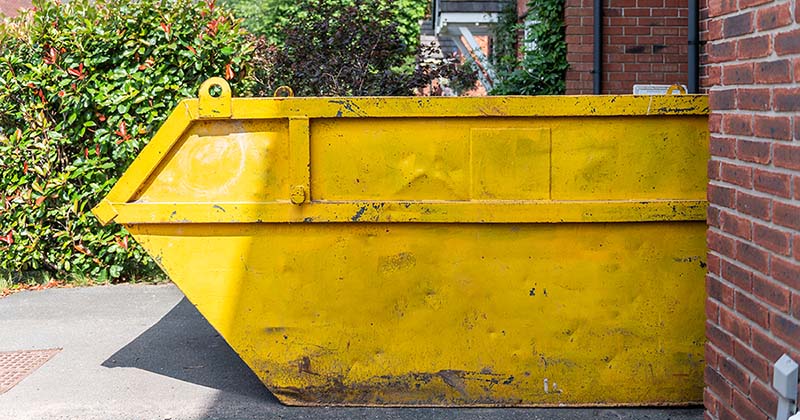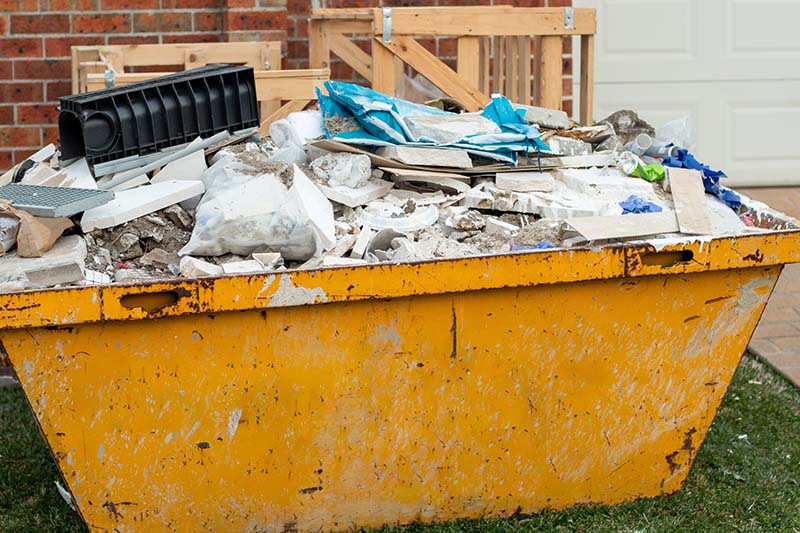Skip Hire Mistakes to Avoid: Rules, Permits, Costs & More

While hiring a skip is a straightforward process, making sure you handle it correctly is vital to avoid extra charges or possible fines. There are a few rules you should understand to keep yourself and others safe, which is why we’ve created this skip hire guide to help you with the process.
Following the rules helps to keep you and the people around you safe from mismanaged waste, and helps us to recycle efficiently. So what are the rules of a skip hire? What should and shouldn’t you do when hiring, placing, and filling a skip?
1. Don’t Put Forbidden Materials in Your Skip
One of the core skip hire rules is to watch what you put into it. Not all waste is accepted by skip companies, and for good reason! Items like batteries, paint, bleach, plasterboard, and asbestos should be avoided, as well as mattresses and electrical appliances. Emptying a skip can damage these items and release hazardous liquids and gases. Skip companies are not always equipped to safely dispose of specialised items, and you should make sure that what you plan to use the skip for is accepted by the company before you hire.
It’s important to remember that you are responsible for the items in your skip. If you’re concerned about passers by putting rubbish into it, you should cover it when it’s not in use or make sure it’s within range of a security camera if you have one.
For a full list of what we do and don’t accept in skips at HIPPO, please see our Accepted Waste Guide.
2. Avoid Overfilling Your Skip

In the UK, it’s illegal to overfill a skip. You should never exceed the wall height of the skip when filling it, and if you do, carefully remove the excess waste to return it to a level state. If your skip is overfull, you may be fined for causing a hazard. It can also be dangerous for you to be around piled waste, as objects may shift and fall unpredictably.
3. Get a Permit for your Skip

You need a permit to place a skip outside your house if the skip is not going to be positioned on your property. You will need to apply for a council permit to make your council aware of the skip’s placement. If you’re putting your skip on the road, you will need to place traffic cones around it for safety, and if it damages public grass you may have to pay an additional fee.
The cost of a skip permit depends on your local council. Each council will have its own prices listed online, and you can access these figures through your local website. Your skip hire company may also help you to arrange for a skip permit.
4. Get a Quote First
Before you hire a skip, get a quote from the company you’re hiring from. You can get quotes from several different places to compare them, or to find out how certain factors affect the price. The price will change whether you want to hire a skip for a day, a fortnight, or a month, so always check before you commit to a hire!
5. Don’t Misplace Your Skip
Think carefully about the best place to have your skip placed. If you change your mind afterwards, it’s not very easy to get it moved! Plan out where you want to put it before you hire, and make sure it’s in a good spot to put items into it. If you want to put a skip on the road outside your house, you should get a permit from the council and tell them where you intend to put it.

At HIPPO, we pride ourselves on making skip hire simple. Read our Skip Hire Guide to learn more about hiring a skip, or order a skip today.

